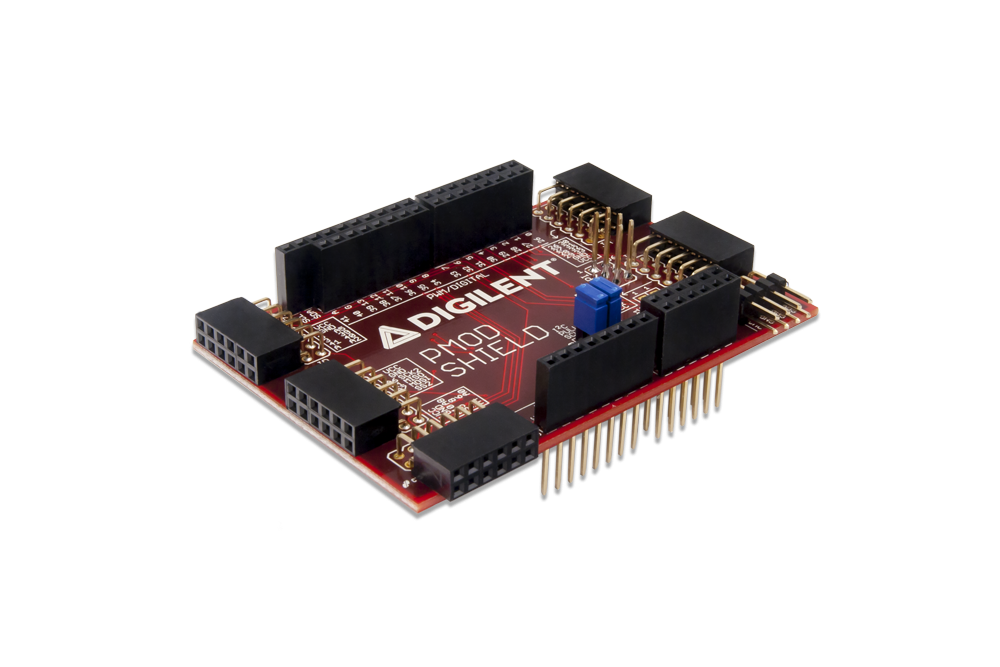Pmod Shield
The Pmod Shield is retired and no longer for sale in our store.
Welcome to the resource center for the Pmod Shield!
Here you will find all the reference materials that Digilent has created for this shield, as well as links to any external content we have tracked down.
The Pmod Shield is an input/output expansion board for use with Digilent microcontrollers including the Wi-FIRE, the WF32, the uC32, and the retired Uno32. It provides the additional circuitry and five 2×6 Digilent Pmod connectors to allow Digilent peripheral modules (Pmods™) to be used with those boards or any other boards with the double-row Arduino styled headers. 2×4 I2C connectors and optional pullup resistors for the I2C bus are provided as well.
Documentation
- Schematic – PDF
-
- Technical description of the Pmod Shield and all of its features. The Wiki may contain more up-to-date information than the PDF.
- 3D CAD Model – ZIP of the STP file
Downloads
- The Digilent Core for the Arduino IDE

